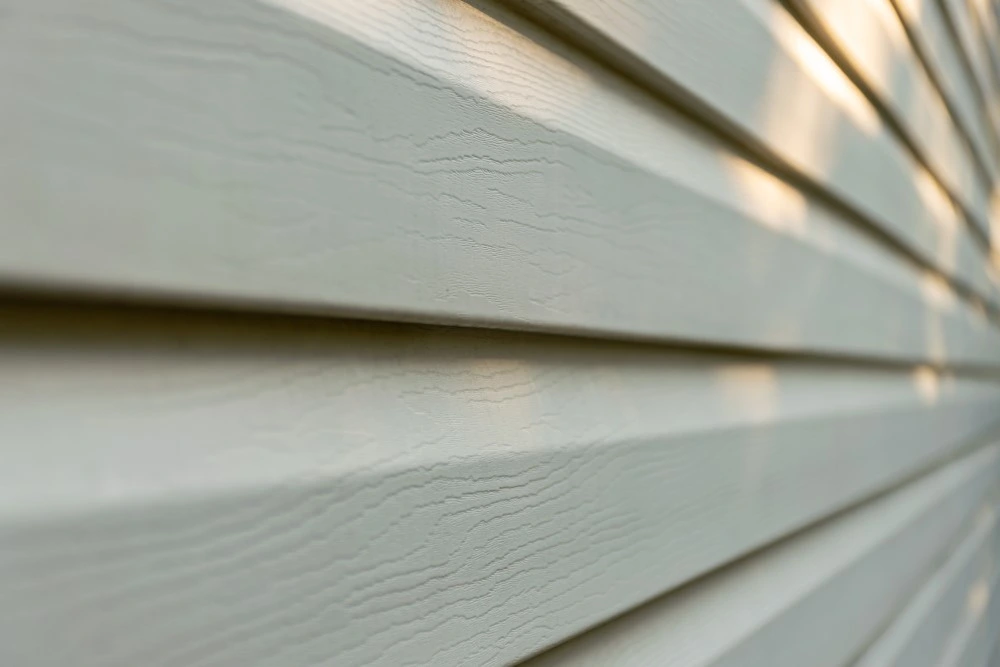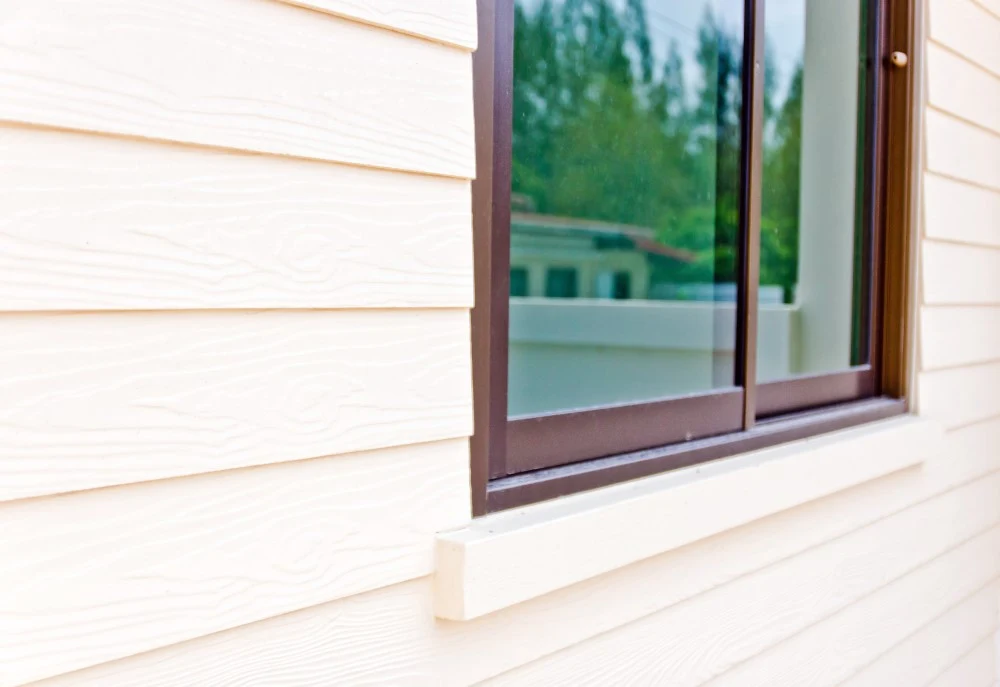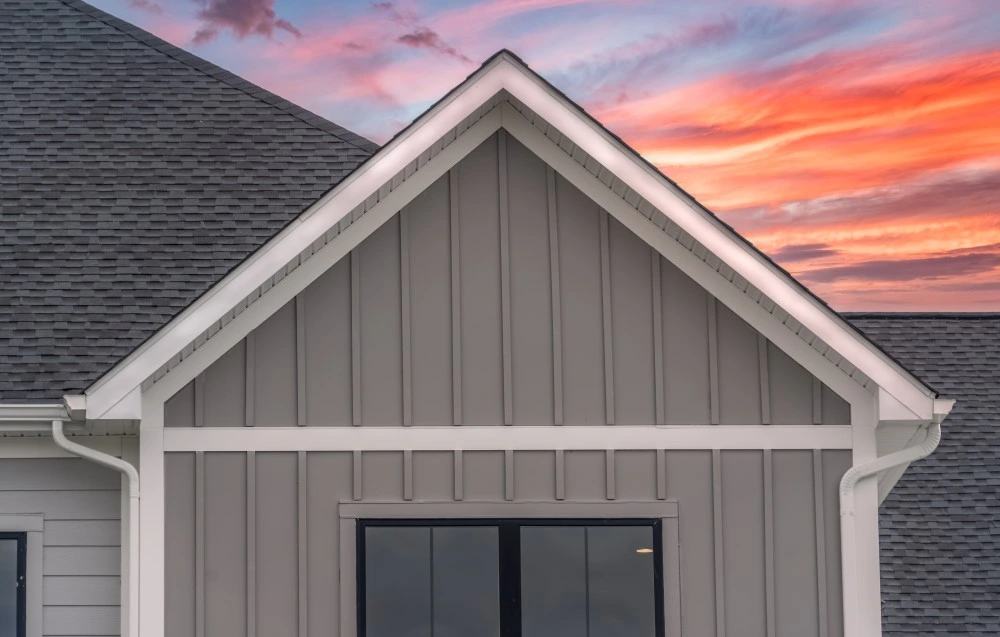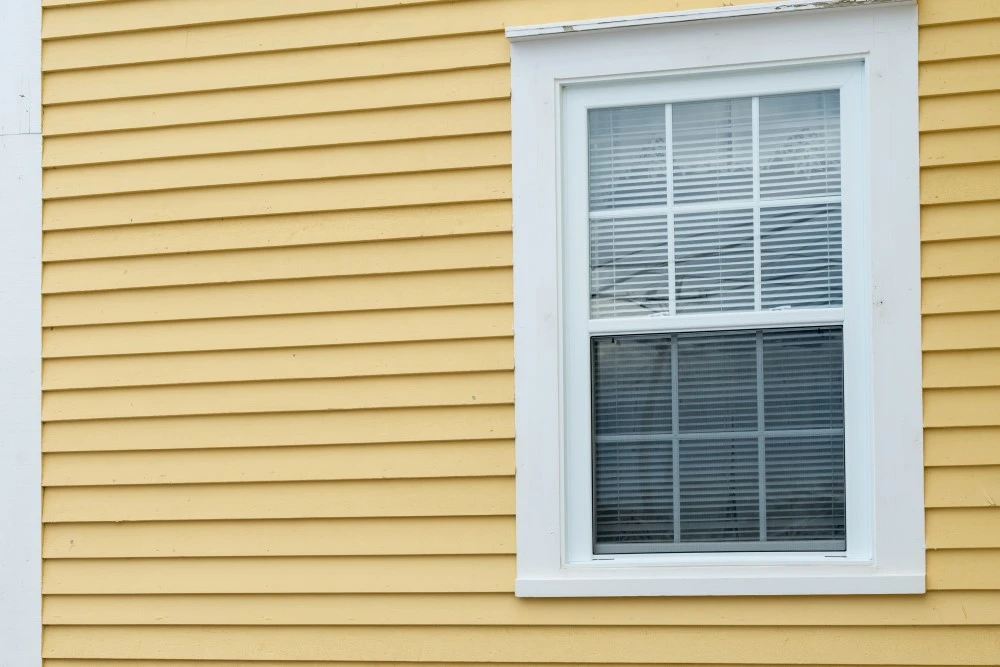The Best Time for a Siding Replacement in Chicago
- 20min
- Updated:10/14/2025
- ByShaunak Ahuja
Deciding when to replace your home's siding involves balancing multiple factors that can significantly impact your project's success and cost. Weather conditions, contractor availability, and material behavior all play crucial roles in determining the optimal timing for your siding replacement project.
As a siding replacement company serving Chicagoland for over 75 years, we can say that yes, you can replace your siding during winter. But will the project be successful? That's another topic altogether. This comprehensive guide by our team at HX Home Solutions will help you navigate the complexities of seasonal siding replacement to ensure your investment delivers the best possible results for your home's protection and curb appeal.
The Best Seasons for Siding Replacement in Chicago

Chicagoland experiences a continental climate with distinct seasons, from frigid cold winters to hot, humid summers with frequent summer storms. In other words, seasonal timing matters significantly when planning your siding installation project, as local weather conditions directly impact material performance and installation quality.
Fall (September-October): The Sweet Spot for Chicago Siding Projects
Fall is the ideal time for siding replacement in Chicago, offering the perfect combination of moderate temperatures and low humidity that materials like vinyl siding, fiber cement siding, and engineered wood siding need for optimal installation. Contractors often have better availability compared to the spring rush, and completing your project before harsh winter weather protects your home through the coldest months.
Important note: Most homeowners find that fall installation prevents the thermal stress that can cause siding to crack during extreme temperature fluctuations.
Late Spring (May): Secondary Optimal Timing
Late spring provides another excellent window for siding projects, as materials have stabilized after winter's temperature extremes and before summer heat becomes problematic. This is also a great way to avoid peak summer costs while ensuring good contractor availability before the busy summer months begin.
Summer Considerations: Pros and Cons of Warm-Weather Installation
Summer offers longer daylight hours that allow contractors to complete work faster; however, extreme heat creates challenges for vinyl siding installation due to significant thermal expansion. Keep in mind that high demand during the summer months also drives up costs and extends scheduling timelines.
Cost considerations:
- Labor rates increase 15-25 percent during peak season
- Material costs rise due to high demand
- Scheduling delays are common with quality contractors
Winter Installation: When It Makes Sense and When to Avoid

Winter siding replacement can offer cost savings of 10-15 percent on labor costs, but cold temperatures make vinyl siding brittle and prone to cracking during installation. Fiber cement and engineered wood siding perform better in winter conditions, though shorter daylight hours extend project timelines.
Fall is the clear winner for most Chicago homeowners, providing the best balance of installation conditions, contractor availability, and weather protection. Late spring is an excellent alternative for those who miss the fall window.
How Different Siding Materials Behave in Chicago Weather
The siding material you choose significantly impacts the best timing for installation, as each material responds differently to temperature and humidity changes.
Fiber Cement Siding
Fiber cement is considered the top choice for homeowners, with James Hardie leading the market due to its exceptional performance in Chicago's demanding climate. This premium material offers unmatched durability and versatility, making it the gold standard for siding replacement projects. Professional installation during moderate weather conditions maximizes the fiber cement benefits for decades of protection.
Key advantages:
- 30+ year durability with minimal maintenance
- Fire resistance rating: won't ignite or contribute to flame spread
- Pest immunity, as termites and carpenter ants cannot damage it
- Minimal thermal expansion (0.0028 inches per 12 feet per 100°F)
- Impact resistance: withstands hail and wind-borne debris
- Moisture resistance when properly sealed and painted
Vinyl Siding
With Mastic in the lead, vinyl siding becomes brittle in cold temperatures, creating installation challenges and potential cracking during handling. Best installed in moderate temperatures between 45-75°F, fall installation prevents winter cracking issues that can compromise vinyl siding's lifespan.

Key advantages:
- 20-40 year lifespan with proper installation
- Low maintenance: requires only occasional washing
- Cost-effective option costing 40-60 percent less than fiber cement
- Color retention technology prevents fading for 10+ years
- Moisture-resistant, as it won't rot or decay
- Insulated options improve energy efficiency by 15-20 percent
Critical installation notes:
- Requires 1/4" expansion gaps in normal temperatures
- Gaps increase to 3/8" when installing below 40°F
- Summer installation risks thermal stress damage
Stone Veneer
Stone veneer is incredibly durable across seasons, but requires proper substrate preparation and weather protection during installation. Learn about our stone veneer solutions for enhanced curb appeal.
Key advantages:
- 50+ year lifespan with minimal maintenance
- Superior insulation properties, with an R-value of 2.5-4.0
- Withstands extreme temperature fluctuations
- Non-combustible material is fire-resistant
- High resale value, adding 15-20 percent to home value
- Authentic appearance mimics natural stone
Engineered Wood
Engineered wood siding performs best when installed in low-humidity conditions, making fall the optimal timing to avoid summer moisture issues. Proper sealing and finishing prevent water damage that can lead to expensive repairs and structural damage.

Specific advantages:
- 25-30 year lifespan with proper maintenance
- Natural wood appearance without solid wood drawbacks
- Impact resistance: superior to fiber cement in testing
- Pest treatment: factory-applied borate protection
- Paintable surface holds finish 2x longer than natural wood
- Moisture engineered, as sealed edges prevent water infiltration
Material choice and timing work together synergistically — some materials offer more installation flexibility than others. These relationships directly impact how your new siding performs optimally for decades.
Cost Savings and Contractor Availability Throughout the Year
We understand that budget also plays a role in your decision. In reality, being strategic about timing can significantly impact your project budget, making this a key consideration for Chicago homeowners.
Money-saving strategies:
- Winter installations can reduce labor costs by 10-15 percent as contractors offer discounts to maintain crews.
- Off-season material purchases may offer savings when demand is lower.
- Early planning allows you to secure better rates before peak season pricing kicks in.
- Bundling projects with other home remodeling work can reduce overall costs.
Planning note: Summer represents the highest-demand season when contractors are busiest, often booking 2-3 months in advance. However, if you plan with a reputable siding installation company, your project will be completed when you want it without the hassle or premium pricing.
While winter offers the best prices, fall provides the optimal balance of cost, quality installation conditions, and contractor availability. This is the timing sweet spot we recommend to deliver maximum value for your significant investment in your home's protection and energy efficiency.
Signs That Say "Don't Wait!" When to Replace Siding Immediately
Even though siding lifespan is high, some situations override seasonal timing considerations, requiring immediate attention regardless of weather conditions. When you can recognize these urgent signs, you can prevent minor issues from becoming major structural problems that compromise your home's integrity.
Critical warning signs:
- Warping or buckling panels indicate structural failure that allows water infiltration.
- Visible mold or mildew growth suggests moisture problems requiring immediate attention.
- Loose or missing siding sections create entry points for pests and weather damage.
- Significant cracks or holes compromise your home's weather barrier and insulation.
- Sudden increases in utility bills may indicate failing insulation or air sealing.
- Pest damage or insect infestations require prompt replacement to prevent further structural damage.
Sometimes your house decides the timing for you — safety and structural integrity always come first. When you need urgent repairs, working with the right contractor ensures proper installation even in challenging conditions.
Making the Right Decision for Your Chicago Home
Every homeowner's situation is unique, and the optimal timing for your siding replacement project depends on weighing multiple factors against your specific priorities and circumstances. This decision framework helps you navigate the key considerations and make an informed choice that delivers the best results for your home and budget.
What Is the Best Time to Replace Siding in Chicago?

For most homeowners, fall (September-October) is the ideal combination of moderate temperatures, low humidity, and contractor availability that results in successful installation. Late spring offers a secondary optimal window for those who missed the fall opportunity.
Is Siding Cheaper in the Winter?
Yes, winter installations can reduce labor costs by 10-15 percent, but potential installation challenges with materials like vinyl siding may offset savings through increased risk of damage or callbacks. Fiber cement and engineered wood siding offer better winter installation reliability.
Is It Okay to Replace Siding in the Winter?
Winter siding replacement is possible, but you’ll need to select materials and your contractor carefully. The ideal contractor will be experienced and understand cold-weather installation techniques. James Hardie fiber cement performs better in winter conditions than vinyl alternatives.
Decision framework:
- Urgent repairs override seasonal timing
- Budget-conscious homeowners may benefit from winter scheduling
- Quality-focused projects perform best in fall conditions
- Material choice affects optimal timing flexibility
The best timing depends on your circumstances, but fall installation offers the optimal balance of installation quality and long-term performance for most Chicago homeowners.
Ready to Transform Your Home's Exterior?
Smart timing decisions lay the foundation for a successful siding replacement project that enhances your home's protection, energy efficiency, and curb appeal. With a little bit of strategic planning, you can ensure your significant investment delivers maximum value for decades to come.
As a trusted home remodeling company, HX Home Solutions provides high-quality exterior and interior remodeling projects backed by over 75 years of Chicagoland-specific experience. Contact us today to schedule your free consultation and discover how the right timing can make a world of difference in the outcome of your project.





